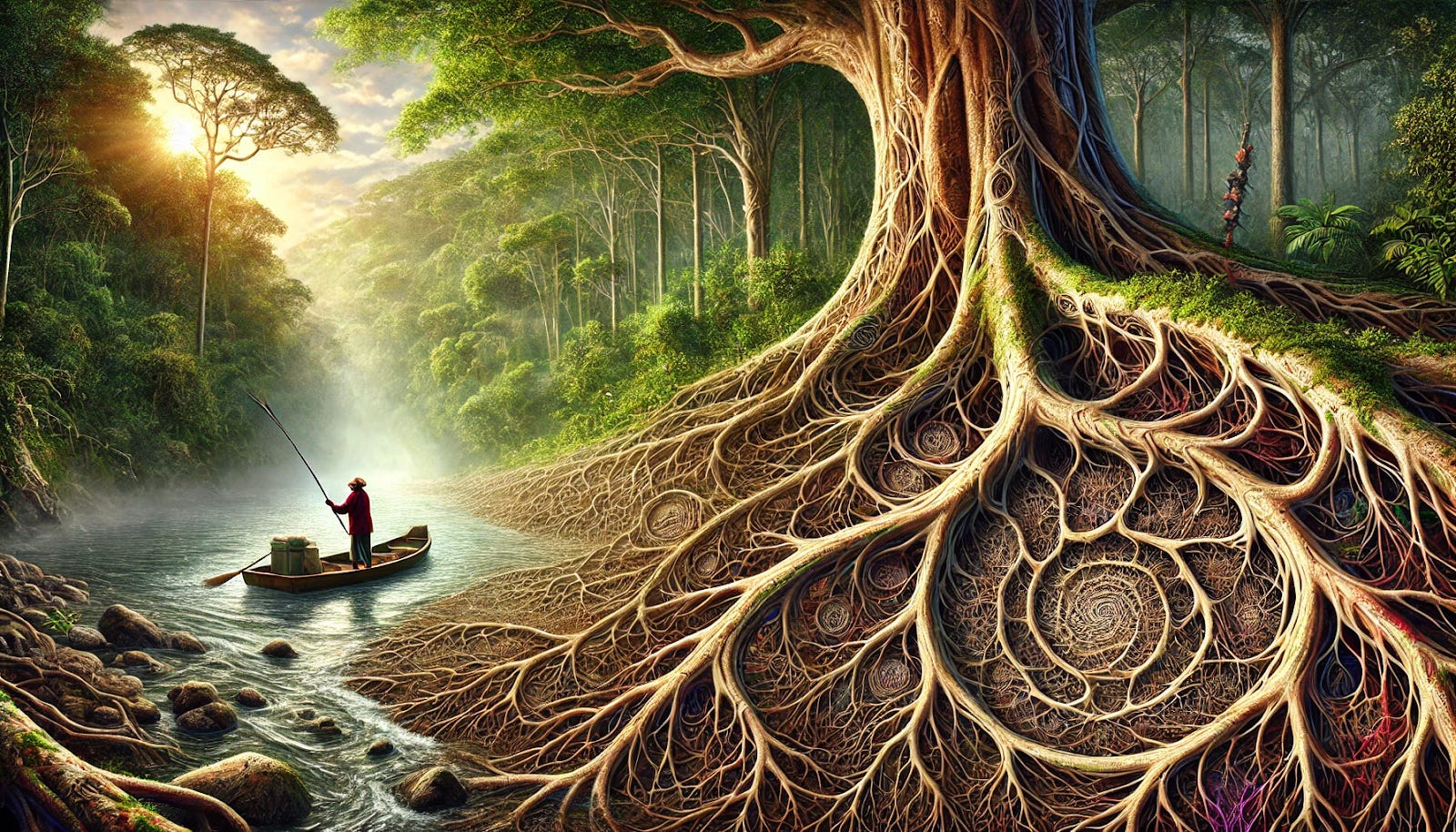In the Amazon basin, far below the rainforest canopy, a network of roots stabilizes a thick trunk. Mirroring the branches and twigs among the leaves above, the roots below split into smaller roots, which split into yet smaller roots, extending outward to absorb water. All that water gets stored in the tree's cells.
A few miles away, a mighty river rushes. The river carries watercraft and fish, a few large and many small, inexorably toward a delta. Smaller rivers feed the great rivers, Apurimac and Mantaro, and then tributaries, which are fed by streams and brooks fed by sources high in the Peruvian Andes.
Navigating the river early in the morning, an old woman goes fishing. Her body contains a system of veins and arteries that carry blood, enriched or depleted, to nourish every cell. Likewise, her brain and limbs are animated by information signals within a network of nerves. These signals must be processed by an organ of fractal complexity, or the old woman will be unable to navigate, much less fish.
We see these sorts of living systems everywhere in the world. They display the property researchers Adrian Bejan and Sylvie Lorente refer to as "few large, many small.” This stunning vascularization of everything means that even inorganic systems can have a kind of life where life is defined as accommodating currents of flow and change. Living systems are thus flow systems. And if a system can no longer deal with currents of flow and change, it dies.
We can say the same of human systems. To the extent that a human system can accommodate flow is the extent to which it will persist in time--that is, to live. In some fundamental sense, this idea, strange and wonderful, animates our order.
The Law of Flow is everywhere.





